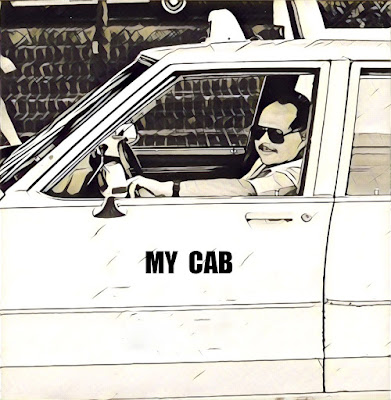RISKS OF THE SHARING ECONOMY
“Any work is more honorable than idleness. I continue to dig with the hope of something better.” Chong Sung, displaced Chinese businessman
Despite the soaring business success of the new Sharing Economy (SE), there are inherent risks for the participants, business and society. There is also the question of what the SE is really reflective of.
The SE has its roots in the Great Recession of 2008 when many workers were forced out of traditional jobs. Today nearly 40% of workers are Self-employed, temporary or freelancers.
Long before the term SE came into existence, the principles of this economic model were practiced among the low income. They survive through skills that might be called “improvised self-sufficiency” or better known as the underground economy. Here people share housing, food, clothing, use government programs, barter, borrow money from peers, share transportation and services from non-traditional venders. They also often had their own way of dealing with injustices. All in an effort to form a patchwork of survival. Their own version of the SE. Today, low income is defined by the US Census as a family making less than $45,622. In the US, 30% of all families are classified as low income.
The SE was fueled by 1) people needing to fill income gaps after 2008, 2) the internet providing a platform for the facilitators of this new economy, and 3) Venture Capital backing it. The SE has attracted $23 Billion of venture capital since 2010. Uber and Airbnb alone have grown to a capitalized value of $103 Billion because of stock market public offerings.
By all accounts the SE is huge and growing. In 2016, 44.8 million US adults used the SE. It is projected that figure will grow to 86.5 million by 2021. This new economy has found success in the fields of transportation, finance, consumer goods, property, personal and professional services.
Proponents point to the benefits of lower cost, convenience, independence, extra income potential, the employment of underutilized assets and building a community of trust. The segments of the SE include Facilitators, Asset Owners, Worker and Participant.
With all this growth, the promised benefits and financial success, why be concerned about the SE?
For one, the spoils of the SE are unequally divided. The Facilitators like Uber take the vast majority of the profits and the other segments the vast majority of the risk. In addition, our society in the end may pay the ultimate cost of this economic model.
The Asset Owners bear substantial risk including liability and asset wear and tear. Yes, there are layers of insurance you can buy to help protect you. However, they are rampant with coverage holes and gray areas. If you are sued (i.e. by an Airbnb guest for a fall), you will spend countless hours in the legal system and your life will be changed. There is more to risk than just the money. The maintenance and wear of assets are entirely born by the owner. Accountants often question what the real returns for an Uber driver are when you consider the cost and depreciation of their vehicles.
The worker (often also the asset owner) probably got into the SE because of the need to for extra income or were pushed out of the traditional employment market. As such, they no longer enjoy the benefits that come with being employed. They work longer hours and make less. They are independent contractors. Yes, they have more independence and freedom. However, it is really only freedom to be unstable and worry about your next gig.
The participant in the SE market also bears risk. There are not the normal government regulations and oversight that protect. You don’t know the condition of the SE asset you are using (car or lodging), the in-depth details of the owner’s background or insurance that is available. The facilitators provide little in the way of reimbursement, protection or solutions for bad experiences.
Our Society also bears substantial risk and may pay the ultimate cost of the SE. One of the great things and attractions of our business market place has been a level playing field backed by a framework of legal regulations. The SE upends this foundation with many of its segments operating beyond this traditional framework, giving the SE an unfair advantage. The SE may make our market place less attractive and more difficult to enter.
You also have to weigh what the Sharing Economy is really reflective of. Is it a great new expansion of our economy or is it a sign more and more of the middle class is slipping away?
The disfranchising of the middle class could bear heavily on our society. If people no longer feel part of the winning system, they can give up hope. Only 41.3% of the low income voted in the 2016 presidential election compared to 78.1% of the wealthy.
One always has to take advantage of extra income opportunities, but you can only hope the long-term cost and impact won’t be too great.
David Young
Additional Reading and Sources:
“The Ever – Growing Sharing Economy: Pros and Cons” by Hannah Neuburge.
“Sharing Economy” by Brent Radcliffe
“What is the Sharing Economy (And How is it changing Industry)” by Derek Miller
“Sharing Economy” – Wikipedia
“What is Sharing Economy – Example Companies, Definition, Pros & Cons” by Brian Martucci
“What’s Yours is Mine? The New Sharing Economy and Small business” by Tyler Shears

Every page loads quick, and each part of this on-line casino is simple to achieve in no various of} clicks. Cafe Community allows you to talk with different players and casino reps publicly and transparently. It's good https://casino.edu.kg/tag/%EB%B4%84%EB%B9%84-%EB%B2%B3 to be a crypto consumer on Cafe Casino because you are greeted with a 350% match bonus of as much as} $2,500 as a new new} player.
ReplyDelete